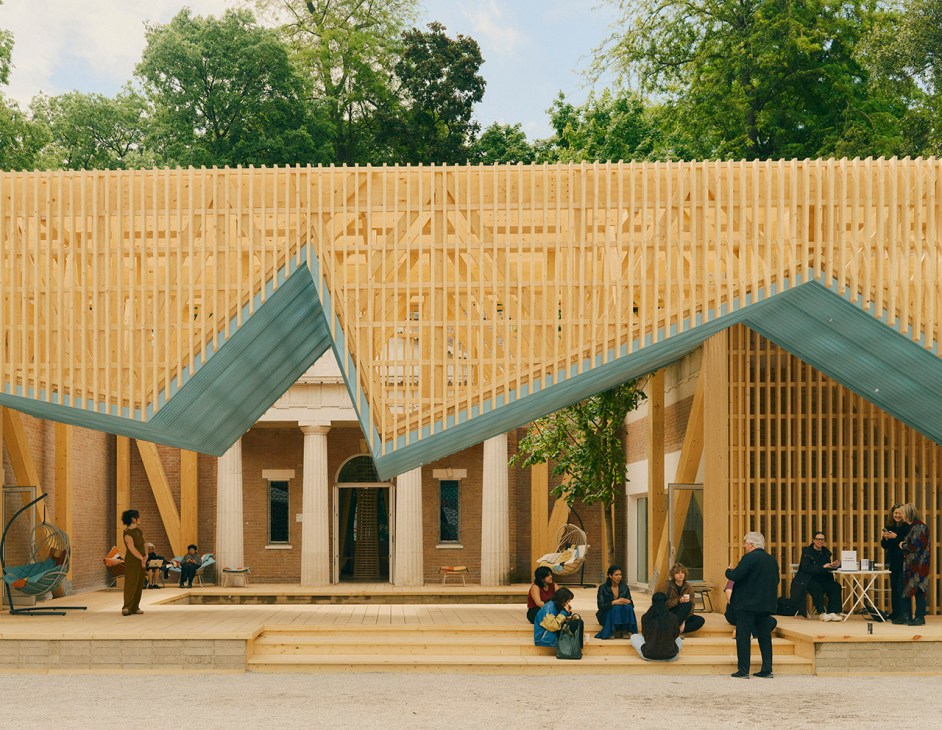The porch does more than just improve the weather – it’s a staple of American life
Mark Twain is said to have once averred that the least that architecture could do was “improve the weather”. It’s a useful aphorism in any climate but has particular relevance to Hannibal, Missouri, along the Mississippi River, where Twain was raised (just ignore the fact that the attribution is apocryphal). In a place where the summer humidity builds to an afternoon crescendo of crackling thunderstorms, architecture has a responsibility to help and can improve people’s quality of life.
Enter the porch. In simple terms, it’s a raised platform with columns that support a canopy or roof. While it was originally just a primitive, hut-like structure, the porch today has achieved high levels of sophistication, especially in a domestic American context. Finely tuned to weather and climate, it provides shade and helps to cool the exterior of a building. It’s also a liminal space. Like a townhouse’s stoop, it has a social function beyond the privacy of a home’s interiors. It’s a vantage point, a threshold.

The porch is deeply rooted in US culture. The classic 1960 novel To Kill a Mockingbird takes place almost entirely on a veranda; in many ways, it’s a dialogue of sorts across a street between young Scout Finch and Boo Radley. In the early and mid-20th century, photojournalist Walker Evans captured numerous stoops and lives of quiet dignity in his photos of the Great Depression and New Deal America. Edward Hopper’s paintings have a porch-like quality too, while Bell Hooks’ poetry highlights porches as places of public appearance, especially for women. But the importance of this space isn’t as widely acknowledged as it should be. The US has often been viewed as a nation of houses but if you look at these buildings, from schoolhouse to house of worship, you see that their porches make them stand out.
The more I have investigated this idea, the more I have discovered that the porch – a staple of the American South – is thriving across the country. Its shape and scale are evolving. At the height of the coronavirus pandemic, a local food co-operative in Fayetteville, Arkansas, relocated to a downtown building, renovating the interiors but also constructing a broad, high veranda. It’s a simple feature with columns supporting a robust roof canopy, furniture for gathering and space to enjoy a meal or watch children playing. It’s not just the prominence that’s important; it’s also the shade, the captured breezes, the lowered temperature and the view outwards to the city’s main thoroughfare and surrounding landscape.

Charlie Hailey, author of The Porch: Meditations at the Edge of Nature, writes that “to think like a porch is to witness and to change our point of view”. This is what the US Pavilion at the 2025 Venice Biennale does with Porch: An Architecture of Generosity. In previous years, the Pavilion hasn’t been as accessible; putting a stoop in front of the building seemed like the obvious answer. As the name suggests, it’s a place for all to enjoy – to find respite and engage with others. Twain – or whoever made the comment – would have approved. It might not change the world but at least it improves the weather.
MacKeith is the lead commissioner for the US Pavilion at the Venice Biennale. He is also the dean and professor of architecture at the Fay Jones School of Architecture and Design, University of Arkansas.
This piece was published in ‘The Monocle Companion: Fifty Ideas on Architecture, Design and Building Better’, which is out now. The fifth title in our Companion series of paperbacks, it’s packed with fresh ideas on design, creativity and the built environment, with a focus on the 2025 Venice Architecture Biennale, which runs until 23 November.



